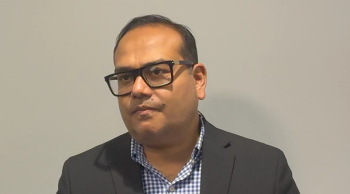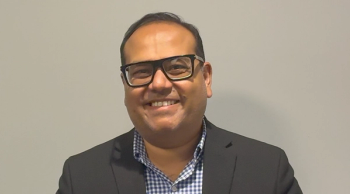
Oncology NEWS International
- Oncology NEWS International Vol 8 No 3
- Volume 8
- Issue 3
First Breast Cancer Treatment Guidelines for Patients
FORT LAUDERDALE, FL-In a first-of-its kind, the American Cancer Society (ACS) and the National Comprehensive Cancer Network (NCCN) have collaborated to produce “Breast Cancer Treatment Guidelines for Patients,” a detailed translation for the public of NCCN’s breast cancer practice guidelines. The NCCN is a coalition of 17 leading US cancer centers. Its practice guidelines have won acceptance among many oncologists as the “gold standard” of treatment.
FORT LAUDERDALE, FLIn a first-of-its kind, the American Cancer Society (ACS) and the National Comprehensive Cancer Network (NCCN) have collaborated to produce
The new publication, released at NCCNs fourth annual practice guidelines conference, is the first in a set of guidelines for patients. The next patient guideline will deal with prostate cancer. Within a year, the series will number 10 publications that will cover the 10 most common cancer sites. These guidelines will be updated each time NCCN updates one of its corresponding practice guidelines.
A Guide to Getting the Breast Cancer Guide
Health care professionals and the public can obtain copies of the Breast Cancer Treatment Guidelines for Patients through the Internet or via the telephone, from either the American Cancer Society (ACS) or the National Comprehensive Cancer Network (NCCN).
NCCN also provides information on its 17 member institutions, including the expertise available at each and how to contact them. Although both organizations will answer general questions about the patient guidelines, they do not provide clinical advice to patients.
ACS can be reached at 1-800-ACS-2345 and NCCN at 1-888-909-NCCN. Their respective websites are
The guidelines are also featured in the debut issue of InTouch, a new magazine for consumers, published by PRR, Inc., that covers cancer prevention and treatment. (For subscription information, call 1-877-2-Intouch or write PRR Inc, 48 South Service Road, Suite 310, Melville, NY 11747-9213.)
PRR, Inc., the publisher of Oncology News International, aided the ACS-NCCN project with editorial and web-page-production assistance.
Officials of the two organizations express confidence that the joint effort will increase patient knowledge, clarify decision-making issues, ease problems in physician-patient communication, improve compliance, and educate patients about the importance of clinical trials and increase the number willing to participate in them. Some envision physicians and patients sitting down with their respective guides in hand when they talk.
Ted Gansler, MD, ACS director of health content, who led the translation effort, said that this is an important direction in meeting an unmet need for cancer patients. Our goal, obviously, is not do-it-yourself oncology, but rather the empowerment of patients to make informed decisions about their treatment and to know what questions to ask their health care providers.
Rodger J. Winn, MD, director of community oncology at M.D. Anderson Cancer Center and chairman of the NCCN guidelines steering committee, said in an interview that one of our goals is to have an impact on the quality of patient care. Remember, guidelines are tools to assist. By putting the patient and provider on the same page, you hope they will begin to focus on the same issues.
The guidelines project emerged as the result of two organizations converging from different directions. For 4 years, NCCN has focused on preparing oncology practice guidelines. Three years ago, an ACS Blue Ribbon committee recommended that the ACS provide lay versions of practice guidelines to the public. After attending several NCCN guideline conferences, LaMar S. McGinnis, MD, a past ACS president and now an ACS medical consultant, recommended that the two groups join forces.
I was impressed with the quality of the guidelines and even more with the mechanism NCCN had established for their development, Dr. McGinnis said. Expert panels develop the guidelines from evidence-based data. When data are not available, the expert consensus prevails, and when a consensus isnt reached, the best information prevails. For each provision in the guidelines, the NCCN gives the level of acceptability (as Category 1, 2, or 3), indicating whether there was total agreement, general agreement, or disagreement.
The ACS desire to use translated practice guidelines to help cancer patients fit well with NCCNs own desires, said William T. McGivney, PhD, NCCNs chief executive officer. We were focused initially on the professional guideline process, but clearly we knew at some point that we would begin the translation of these guidelines to patient information, he said. We want to enhance patients understanding of appropriate treatment and improve informed decision-making.
Attitudes have changed dramatically regarding cancer over the last two decades. Fatalism has given way to an acceptance by most Americans that cancer is a treatable disease, and some take an aggressive approach to learning about their illness and participating in their therapy decisions. Many cancer patients today are voracious information seekers who surf the Internet and search out publications and advice, acquiring enormous amounts of material from diverse sources.
The problem this poses for any patient is perspective, Dr. Winn said. How do they weigh what is given as an alternative? How do they know it applies to them? Very often patients come in actually befuddled. They have reams of information, but they dont know how it applies to their situation. Pure information doesnt help. It has to be structured information. Hopefully, we will be able to put the information into a structure that enables patients to grasp it and understand how it applies to them.
ACS took on the task and cost of translating the NCCN practice guidelines, beginning with breast cancer. The guidelines are written at a high school graduate reading level, which allows a detailed, relatively sophisticated description of breast cancer; its various types, stages, and tests; and the treatments available for each stage of the disease.
The breast cancer guidelines are very specific in explaining why different tests have an impact on a womans treatment choices and in giving insight into why a physician is recommending one treatment over another, said Dia Caron, NCCNs patient information specialist.
A key to making the patient program effective is keeping the guidelines current. NCCN updates its practice guidelines for physicians at least once a year. ACS plans to update the patient guidelinesand do so quicklywhenever NCCN changes the practice guidelines on which they are based.
To ensure accuracy, the guidelines for breast cancer patients were reviewed by staff at ACS and NCCN, and by other experts, including Dr. Winn, oncologist Robert W. Carlson, MD, of Stanford University, who chairs the NCCN breast cancer guidelines panel, and breast cancer survivor Mary Lou Smith, a Chicago-based health care consultant who has served on two NCCN practice guidelines panels and is a past president of Y-ME National Breast Cancer Organization.
The translation to the patient guidelines had to be totally consistent with the directives and recommendations that the expert panel on breast cancer put together for the professional guidelines, Dr. McGivney said. He and others foresee the guidelines as being beneficial to patients and oncology teams alike.
NCCN Member Institutions
Arthur G. James Cancer Hospitaland Richard J. Solove Research Institute at Ohio State UniversityColumbus, Ohio
City of Hope National Medical CenterDuarte, California
Dana-Farber Cancer InstituteBoston, Massachusetts
Fox Chase Cancer CenterPhiladelphia, Pennsylvania
Fred Hutchinson Cancer Research CenterSeattle, Washington
H. Lee Moffitt Cancer Center & Research Institute at the University of South FloridaTampa, Florida
Huntsman Cancer Institute at the University of UtahSalt Lake City, Utah
Johns Hopkins Oncology CenterBaltimore, Maryland
Memorial Sloan-Kettering Cancer CenterNew York, New York
Robert H. Lurie Comprehensive Cancer Center of Northwestern UniversityChicago, Illinois
Roswell Park Cancer InstituteBuffalo, New York
St. Jude Childrens Research HospitalMemphis, Tennessee
The University of Texas M.D. Anderson Cancer CenterHouston, Texas
UCSF Stanford Health CareStanford, California
University of Alabama at Birmingham Comprehensive Cancer CenterBirmingham, Alabama
University of Michigan Comprehensive Cancer CenterAnn Arbor, Michigan
UNMC/Eppley Cancer Center at the University of Nebraska Medical CenterOmaha, Nebraska
These patient guidelines are very important, Ms. Smith said. Information helps empower patients to make decisions that are in their best interests. Patients are somewhat at a disadvantage if they dont understand some of the basic reasons as to why a physician is proposing a certain treatment. It is critical to have reliable information for patients that is consistent and individualized. For physicians, I see the guidelines as a way to reinforce information already given to a patient. I can see a physician annotating them for the patient.
Patient care is a partnership and one that works best when everyonepatient, family, and the oncology teamhas a sense of what the opportunities and treatment options are, Dr. Carlson said. With the new guidelines, he said, patients better understand their disease and their treatment options, and this makes the interactions more efficient. The educated patient is always easier to treat.
For the oncology team, patient guidelines can save time. Thats an enormous advantage, Dr. McGinnis said. Its a heavy time user to get into indepth discussions. If a physician or nurse oncologist can open the dialog, direct the patient to the guidelines, and have them come back and ask the proper questions, it can save a lot of time.
One expectation for the guidelines is that through the process of involving and educating patients, compliance will improve. Informed individuals who believe they are part of this decision-making process are going to be more compliant with treatment because they have bought into it; its their decision as well as the physicians, Ms. Smith said.
Likewise, the hope hovers that the guidelines will enlighten patients about clinical trials, and more of them will want to participate. The guidelines, for example, describe the kinds of questions researchers seek to answer in trials; what takes place in phase I, II, III trials; and why it is important to volunteer.
As patients read the guidelines, they are going to be amazed at how much we know and that so much of what we know has been learned from clinical trials, Dr. Carlson said. We hope patients will realize that trial participation does not make them a guinea pig or a second-class citizen; it is quite the opposite.
Articles in this issue
over 26 years ago
Strong Upsurge in HIV and Tuberculosis Predictedover 26 years ago
NCAB Urges Repeal of Law Requiring Research Data Disclosureover 26 years ago
Response to Ontak Leads to Improved QOL in CTCLover 26 years ago
Medicare Will Phase in Risk-Adjusted HMO Payments Over 5-Year Periodover 26 years ago
Patients Need to Understand Cancer Testing Limitationsover 26 years ago
Assessing the Value of the Pain Intensity Assessment Toolsover 26 years ago
More Than 500 Clinical Practice Guidelines Now Available On-lineover 26 years ago
Inefficient Burning of Fossil Fuels Puts Children at Riskover 26 years ago
IOM Urges Replacing Race With Ethnicity in Cancer StudiesNewsletter
Stay up to date on recent advances in the multidisciplinary approach to cancer.



















































































